I wonder if I’d get tired of a garden with nothing but chartreuse flowers for months on end. I suppose it’s possible.
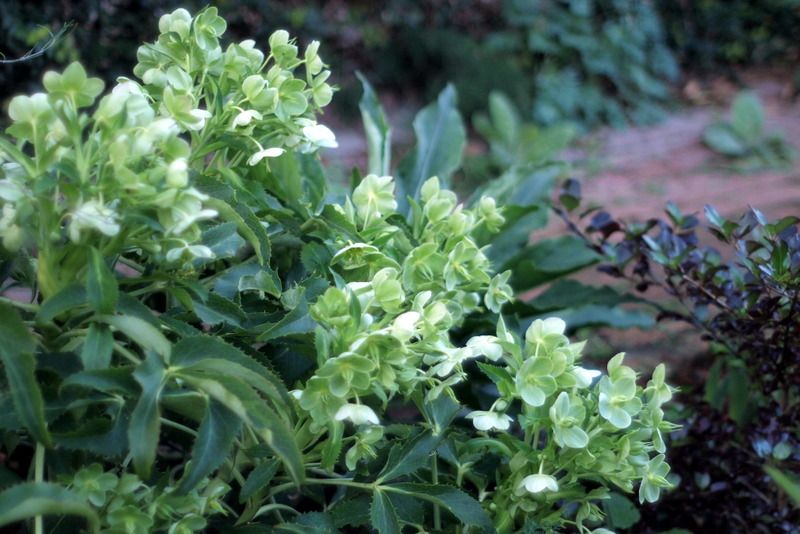
Helleborus argutifolius. Tough and beautiful, doesn’t complain, doesn’t expect any special treatment. All stellar attributes. Incredibly promiscuous in the seeding-around department, but nobody’s perfect.
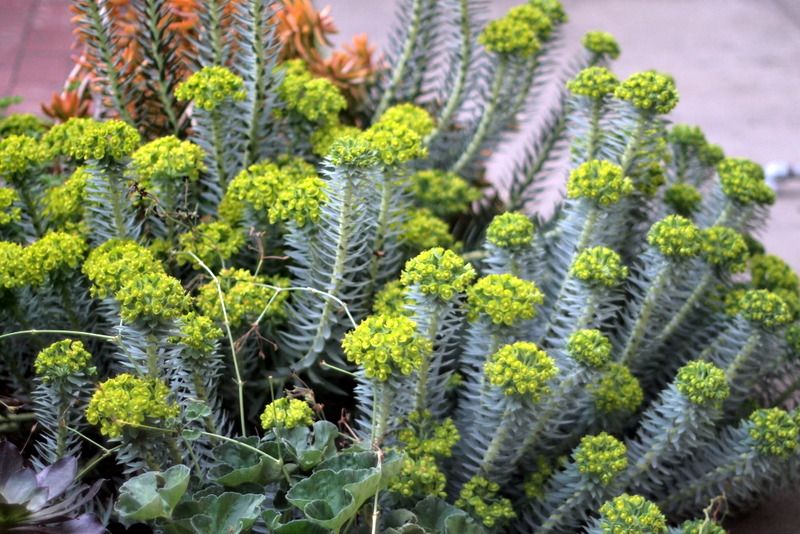
Euphorbia rigida is also full of similarly positive attributes but only lightly reseeds.
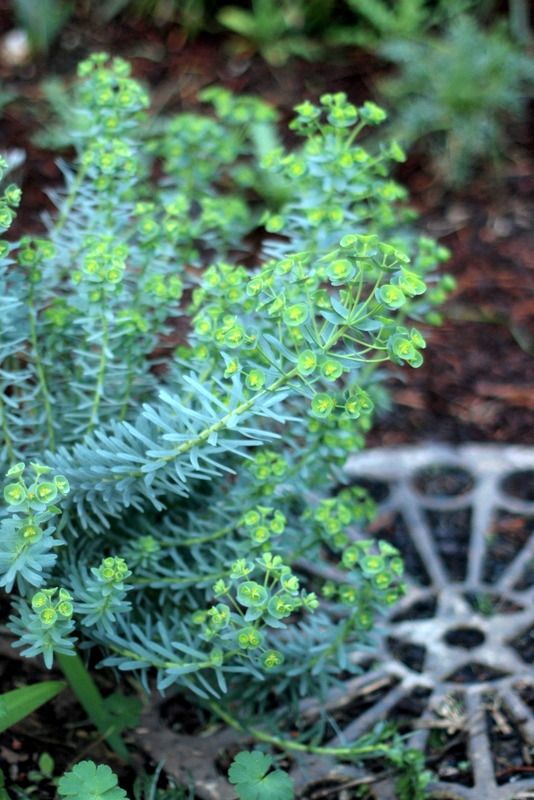
This euphorbia is an absolute terror as far as reseeding, but again it’s hard to say no to chartreuse. (Hard to say no to euphorbias in general.) It’s either E. niciciana (Euphorbia seguieriana ssp.niciciana) or E. nicaeensis. I remember buying it years ago as E. niciciana, but I could be mistaken. I know I’ll regret not weeding out these few plants, but they make even February seem lush.

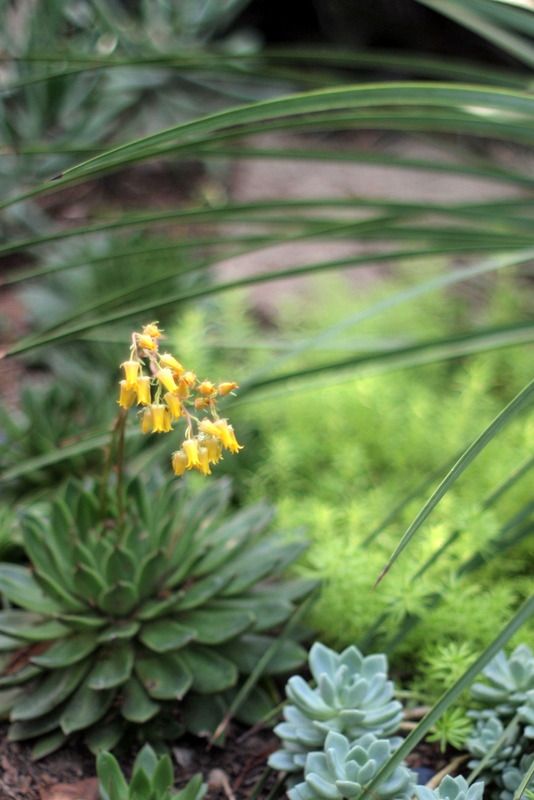
Echeveria agavoides is possibly even more charming in bloom, if that’s possible
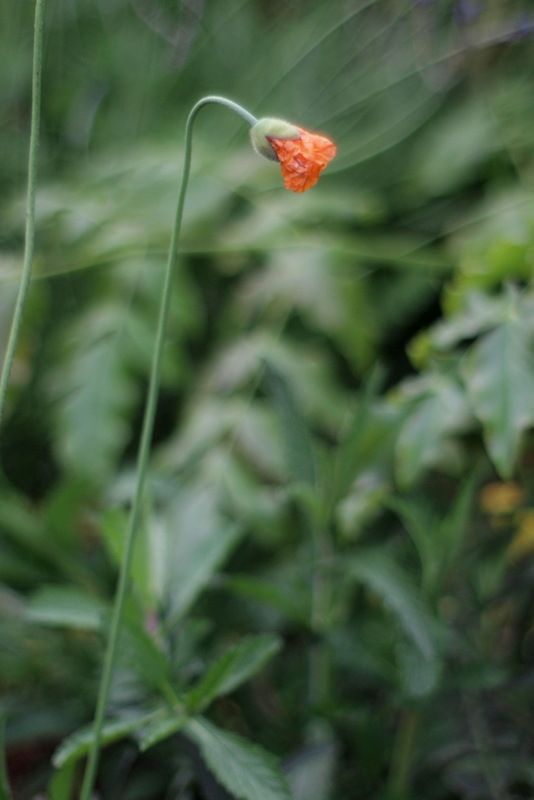
Poppy time. The first blooms of Papaver rupifragum
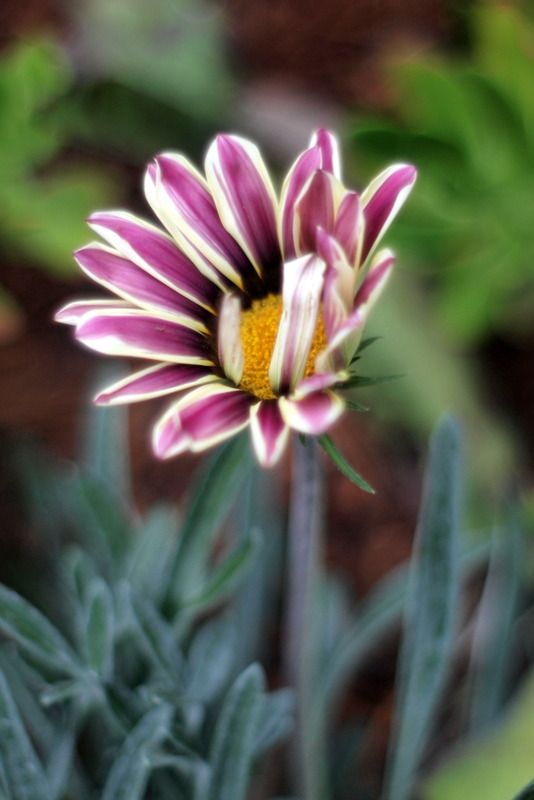
A gazania just starting to close up shop as the sun was setting.
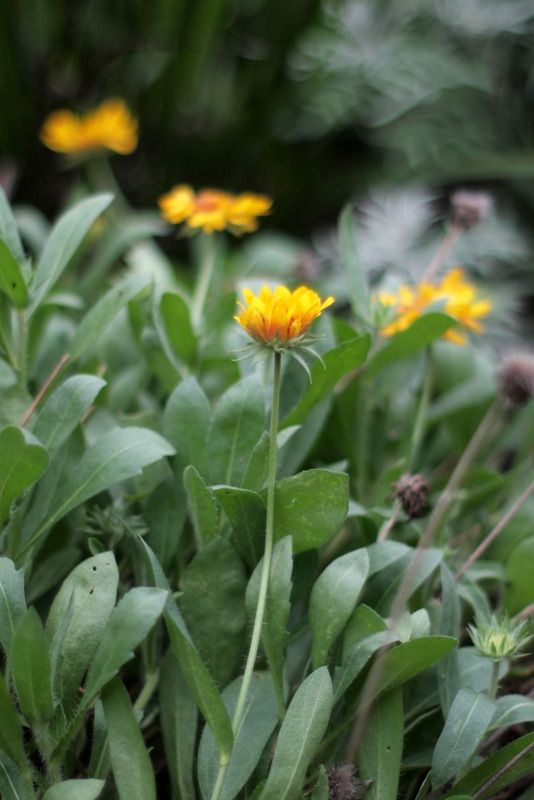
Gaillardia ‘Oranges & Lemons’ in need of a cutback for spring.
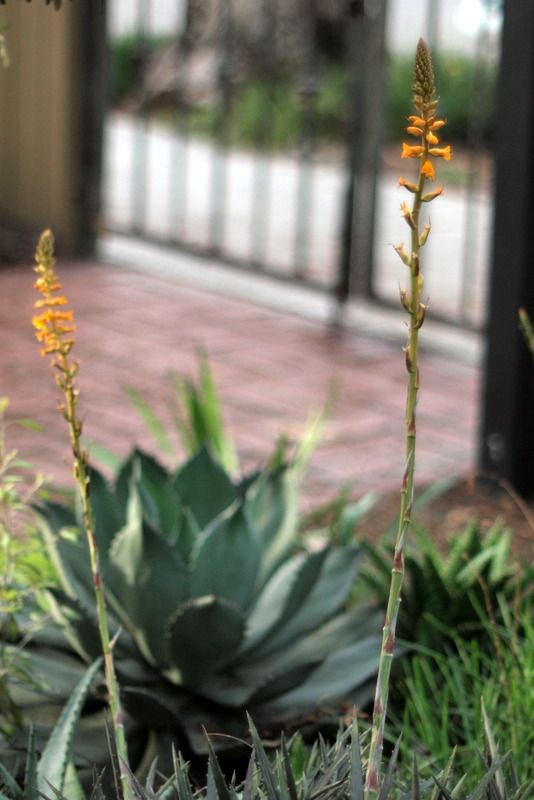
In the front garden, new blooms on the enormous patch of dyckia. The lack of rain has impacted the snail population to the garden’s advantage this winter. Snails love dyckia spears like I love asparagus spears.

I’m including the Brachysema praemorsum ‘Bronze Butterfly’ because technically it is blooming, but the red claw-like blooms are both virtually invisible as well as insignificant.

This salvia looks very promising, a cross of Salvia pulchella with Salvia involucrata. My source, Annie’s Annuals, thanks Strybing Arboretum for this purportedly compact salvia.
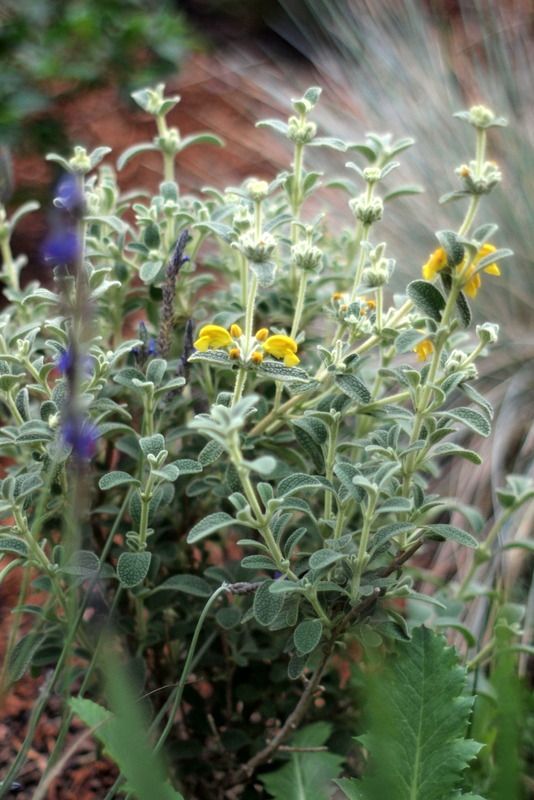
The Phlomis lanata I planted in fall are beginning to bloom. Very excited to see how this fairly compact phlomis with the common name of Pygmy Jerusalem Sage fits into the scheme of things.
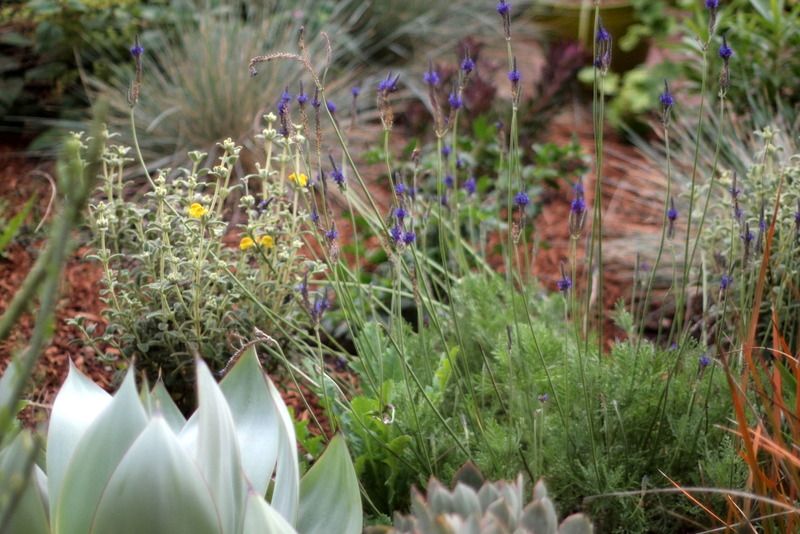
Lavandula multifida has been in steady, nonstop bloom since its fall planting.
Snow, mud, or otherwise, we all want to know how February is treating you. As always, Carol at May Dreams Gardens collects our stories.

Interesting that your Euphorbia are blooming. Mine (mostly E. ‘Dean’s Hybrid’ but also E. rigida and another whose name I’ve lost) are all tardy this year. Happy GBBD!
Lovely! Does that vivid Salvia have a name?
lots of very familiar plants, but a heads up on that Salvia pulchella x involucrata. Definitely not compact, they get huge. I ended up taking them out because I was tired of trying to keep it to 5 feet across by 3.5 feet tall, the size I had allotted it. Also because it kept getting flower buds destroyed by the Light Brown Apple Moth, a real pest here locally. LBAM also loves to eat new shoots on my various Leucadendrons and Mimetes.
Kris, I’ve been wondering if that Dean’s Hyb is a nicer, less seedy version of mine. I should trial it pronto, thanks.
Hoov, just what I’ve listed as far as I know, but see David’s comment. Damn!
David, for me involucrata has always had its buds ruined by some creature — not sure if it’s the LBAM but it may well be. I was hoping this cross would fare better…and be compact! I have been snipping little green worms in two that I find under the leaves, so it doesn’t look promising.
Denise, that Salvia does always look great in the display beds at Annie’s, and doesn’t seem to have the same issues with LBAM, and Annie really likes it. I suppose if I were growing it without regular summer irrigation, it might stay smaller. But in general, in our less hot/dry conditions, it does want to get 5′ tall by 8′ across. I also really like S. involucrata, but bloom season is mostly in fall/winter rather than year round. My favorite use of S. involucrata is trained as an espalier against a fence, and as colorful as Bougainvilla. Somehow S. involucrata seems less bothered by LBAM in my garden.
Definitely as enamored of all the green/chartreuse blooms this time of year. Have you tried growing Mathiasella buplueroides for spring into summer chartreuse blooms looking like a lacier Helleborus argutifolius?
David, thanks for the additional info. Yes, I found mathiasella at The Dry Garden in Oakland but haven’t kept it alive long. Another touchy chartreuse flwr I’m hoping to see bloom is musschia, which wants bright light but very little sun, and steady moisture. Both of these seem to love the Bay Area. You make it looks so easy!
Mathiasella in Long Beach gardens would probably be best grown with north or east exposure and treated as you would tree ferns or Fuchsias. In my Berkeley garden they’re tough and fairly drought tolerant, but flop around and need support or staking. The Musschia is also fairly drought tolerant here, and thrives in complete shade. The flowers themselves aren’t all that, but the candelabra towering inflorescence is very dramatic, up to 5 feet tall. Cloudforest habitat in Madeira, so Santa Ana conditions would be tough on it. Look into Melanoselinum decipiens if you like Dr. Seussical plants, also from Annie’s.
David, the melanoselinum is currently getting a trial too!
I’m so envious of your Salvia pulchella x involucrata. I had mine in the ground for two years and it never bloomed, so I yanked it. That color is marvelous.
Heather, I was just looking at it yesterday, amazed at all the new flowers. I pinched back a few stems, because it’s starting to spread wide already. Involucrata was always stingy, even in fall, so this is quite the change. But something is chewing the leaves, so we’ll see how that goes…